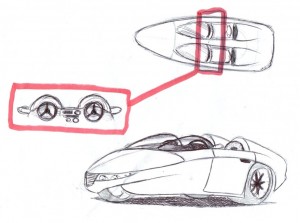You might remember the classroom activity that I call ‘Random Power Point Presentations’ – if not, you can read about the original idea here and see some sample presentations here.
In the original challenge, the students had advance warning of the topic but no idea what was going to be on the slides. In this new version of the activity, it’s the other way around: the students receive the five slides of their presentation the day before class, but are only told what the topic of the talk is a few minutes before they have to give it!
Hang on. How can this possibly work? If they can see the slides, can’t they work out what the topic is? In this case, no. See for yourself. Here is the image that I posted for the students to see the day before the lesson:
I deliberately looked for the kind of generic images that could be applied to any topic. As for the five-slide structure, it represents a simple rhetorical progression, attempting to guide the audience from a state of honest misapprehension to one of enlightenment, signing out with a fairly crude action-point. (You can tell I’ve sat through a fair few late-night infomercials in my time…) I posted these instructions alongside the image:
In class the next day I put the students into groups of three. Each group would have 25 minutes to prepare a short 2-3 minute presentation, with each person having to speak at some point during the task. The presentation titles were already written on slips of paper. Each group drew a title out of the hat and read it out loud. There was quite a bit of laughter because – naturally – I had chosen some very weird titles. Here they are:
‘The end of the rainbow – closer than you think’
‘Polar bears in space – the final frontier’
‘Too much cheese’
‘A dollar a day – hey! hey! hey!’
(There was also another one about zombies, I think, but I can’t remember the title of that one)
The presentations were every bit as creative and imaginative as I had hoped they would be. For example, the group who had the bizarre topic of ‘Too much cheese’ had the clever idea that CHEESE was an acronym (C = cocaine, H = heroin, E = ecstasy etc.) and turned it into a drugs awareness talk. Brilliant.
I like this activity a lot. The coherence of the 5-slide structure not only helps the speakers navigate their way through their talk, it also adds a dash of style. The three slides in the middle (most people think – most people forget – what you need to remember) were my attempt to incorporate a rhetorical technique which is sometimes described as ‘set-em-up-and-knock-em-down’ – in which the speaker intensifies the eventual impact of the message (‘what you need to remember’) by first making the audience wait while s/he briefly considers a commonly-held argument before revealing its flaws (‘most people think’ – ‘most people forget’).
It occurred to me that this 3-step progression could also be a good planning tool for writing assignments, especially the kind of pro/contra essays which often feature on exams. In my experience, the problem many students encounter when faced with an opinion-based assignment is that they run out of things to say. And why? Often it’s because they get to the point too quickly – in other words, they start with ‘what you need to remember’ and ignore ‘most peole think’ and ‘most people forget’.
A simple worksheet using the 3-step structure can help students plan more effectively and develop their ideas and arguments. Here are some examples, from an intermediate-level group. I wonder if the students would have reached the same conclusions if they had considered the topic in a less structured way? What do you think?



































